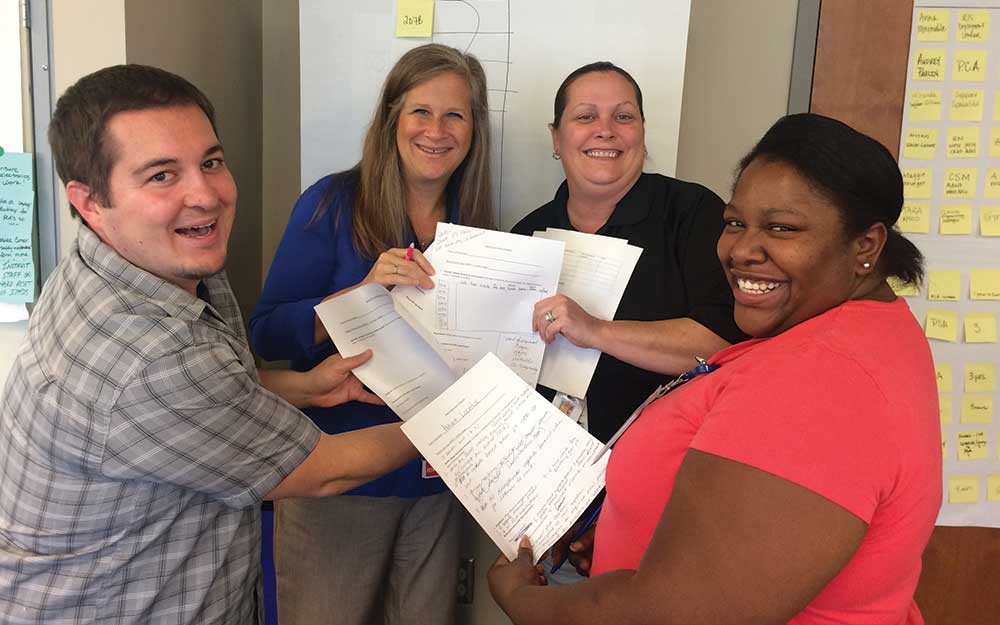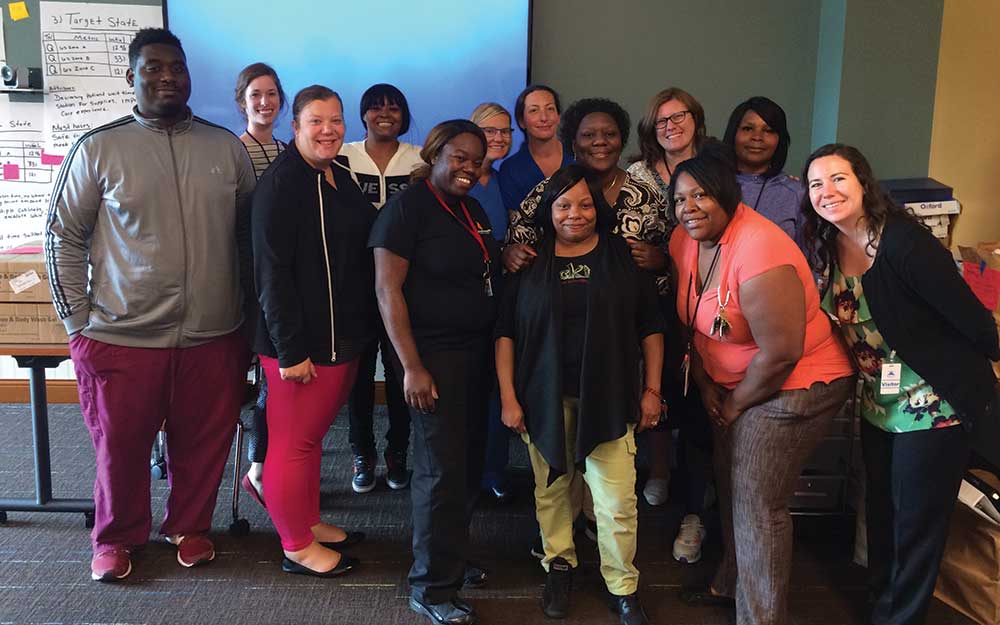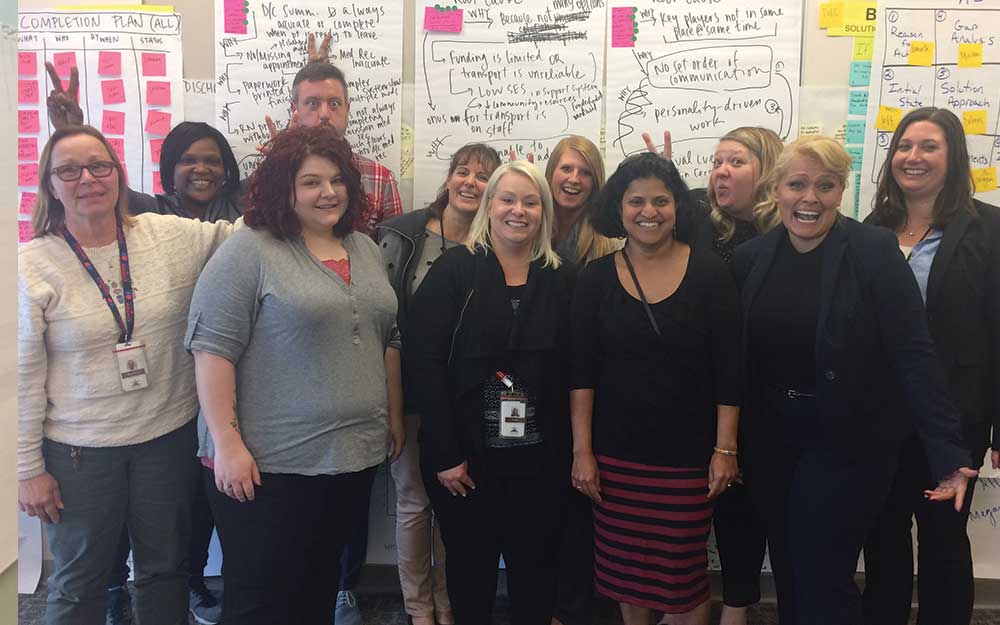
What’s new with the Rogers Improvement System
11/15/17 04:07:pmOne year into the Rogers Improvement System (RIS), teams throughout the organization are busy reviewing and revising processes, tackling clinical care protocols, and sorting and organizing so that employees have what they need, where and when they need it.
“Wherever I go, I see people catching RIS fever,” shares Paul Mueller, Hospital Division CEO. “Those involved in events and projects are making a big difference in our culture and giving those at the front line a strong voice.”
A new management approach
A team in Brown Deer is rolling out what’s known as Managing for Daily Improvement. This management approach uses a daily huddle of teams, allowing everyone to be aware of the goals and track key metrics. In the team approach, employees discuss what went well the day before and what can be improved. The people closest to the work are the ones who improve processes under the guidance and coaching of their leaders. Teams will review metrics for quality of service including length of stay, percentage of patients stepping down to outpatient care; cost of providing care per patient day; and ability to serve community needs through maximizing capacity. With this new approach, the standard work for leaders and meeting-free zones allow more time for coaching and spending time with those who are carrying out the work. Like all RIS initiatives, the concept will spread to other sites when it is working effectively at the original site in Brown Deer.
In the Admissions and Transition Value Stream:
-
A recent event aimed to improve the experience of the professionals who refer to Rogers with a goal to increase follow up communication and reduce referent complaints. New processes are facilitating additional touchpoints with referents during the admissions process and weekly during treatment or at transitions in care. The Rapid Improvement Event (RIE) also resulted in refining the phone tree options for referents to select in order for the call center to prioritize the calls, and we have improved the process of ensuring referral sources are identified and entered into Cerner. “Those who refer to Rogers are so important to our mission, and we’re confident our work will make their experience better,” Mary Jo Wiegratz, director of outreach, says.
-
A team revisited the transition flow from inpatient to partial hospitalization and intensive outpatient programs. By eliminating the barrier of MD to MD review for almost all programs at Silver Lake, the percentage of patients moving from inpatient to PHP or IOP went from 36% to nearly 52%. Kim Effertz, executive sponsor of the value stream, comments, “This has been a really powerful RIE. It’s exciting to see how many more patients we can see, giving them a greater ability to access care.”
-
Another team tackled the transition from inpatient to residential programs, working to increase use of a transfer referral form that was developed earlier, decrease the percentage of cases that need to reviewed a second time, and increase the percentage of patients who are successfully referred. The group streamlined the criteria for residential programs and exclusion criteria and has added documents to the intranet. They also educated staff and medical staff on how the process should work.
In the Inpatient Value Stream:
-
A team worked recently to analyze and improve the use of patient care associate (PCA) role in the Adult Inpatient unit at Rogers–West Allis. The PCA RIE set goals to clarify the responsibilities of the role and update job descriptions, reduce interruptions, and improve patient satisfaction and the rate of accurately returning patient belongings.
-
Another group took a second look at the nurse workflow with distributing medications in the West Allis Adolescent Inpatient unit. The goals were to reduce the percentage of medications given early, late or missed; and to reduce the time spent passing out a medication by reducing interruptions. They are trialing how to meet these goals with the use of a medication cart and by reserving rooms for nurses to hand out medications. These changes will also facilitate greater patient privacy.
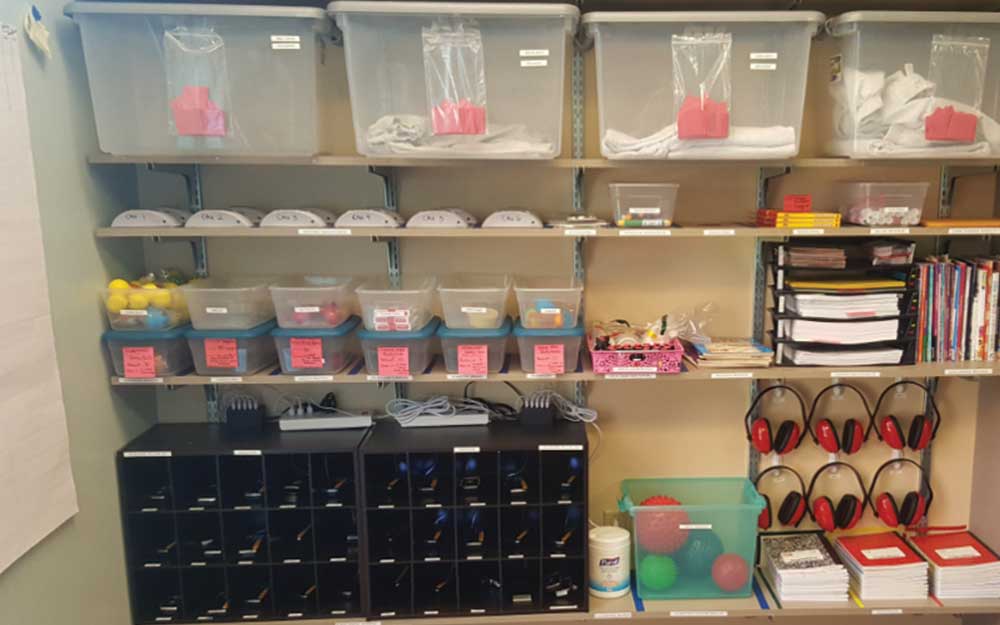 |
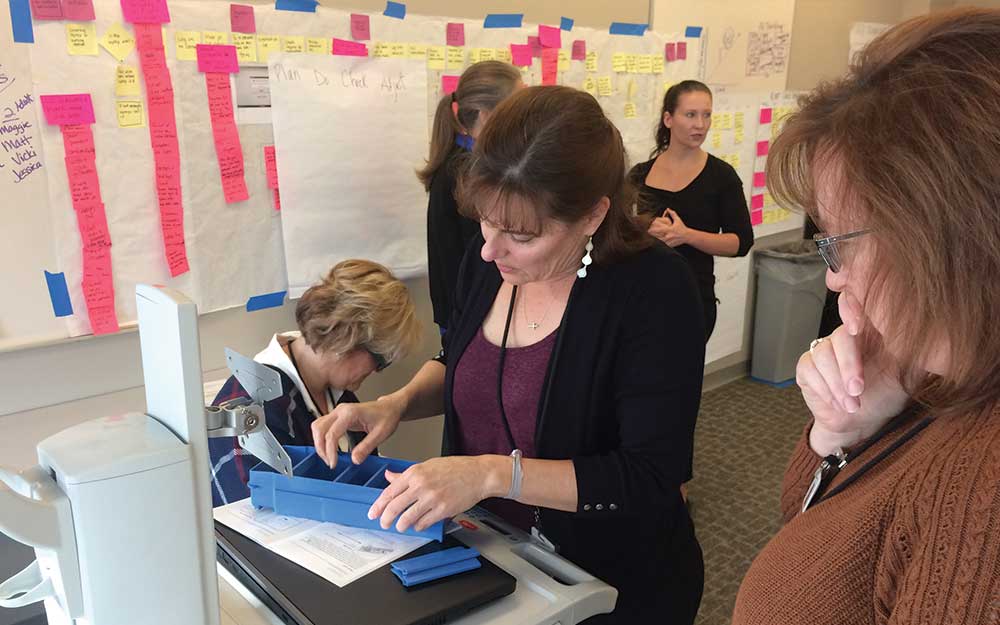 |
-
At Rogers–Brown Deer, the staff on both the Adult and Child/Adolescent inpatient units have been sustaining their exciting 6S initiatives.
The Depression Value Stream is the third Rogers Improvement System Value Stream and the first one focusing on clinical care:
-
The first rapid improvement event in August focused on the non-medical treatment of depression, led by Dr. Brad Riemann, chief clinical officer. Prior to this event, a team created the Depression Protocol, a treatment manual for depression comprised of seven core modules and other additional content. The RIE team then adjusted the protocol to focus on engagement, safety, and treating depression/anxiety symptoms. Since the protocol was implemented in mid-October, depression scores on QIDS assessment have reduced.
-
The second event focused on the medical treatment of depression. Dr. Jerry Halverson, chief medical officer, led the team through evidence-based practices for depression related to pharmacology and adjunctive therapies including (ECT and TMS) for both the adult and child/adolescent populations. The team reviewed research and best practices, while assessing the cost of medications including out-of-pocket expenses for patients. The team is measuring and monitoring the use of the algorithm and the cost of medications prescribed.
-
The third event focused on fidelity monitoring and training protocols, implementing the use of automated tracking technology to monitor use of protocols. The approach to training was refined to provide the right training based on discipline and skill level. Success is being measured by the completion of fidelity monitoring to the set standard, staff satisfaction with protocol delivery, staff proficiency with the protocol, and upholding the protocols fidelity.
-
Several smaller projects are part of the Value Stream: identifying depression upon admission; criteria flagging in Cerner, assessing the use of the Columbia Suicide Risk Assessment, and implementing PROMIS Depression Screen in Brown Deer Inpatient Child/Adolescent programming.
The RIS work is generating excitement at all levels of the organization. Keith Gaertner, social worker in an Oconomowoc inpatient unit, comments, “It’s nice in a big company that we get a chance to have a say in how things work.”
Jim Kubicek, chief operating officer at Brown Deer, shares, “We need to be easy on the people and hard on the process. Staff want to do the right thing. It’s on us to give people the right tools.”
Elizabeth Gilbert, chief operating officer at West Allis, adds, “We’re empowering people at the front line to improve the work. By pushing through change, we’re able to save time and give that time back to patients.”
If you are interested in getting involved in the Rogers Improvement System work, talk with your leader, a deployment leader, Kent Franklin, director, at kent.franklin@rogersbh.org, or contact Terri Schultz, vice president of continuous improvement, at tschultz@rogershospital.org.



